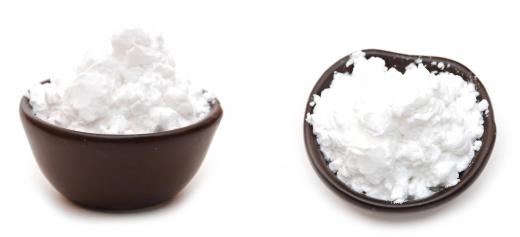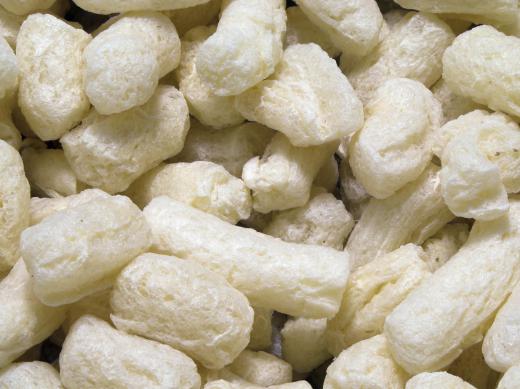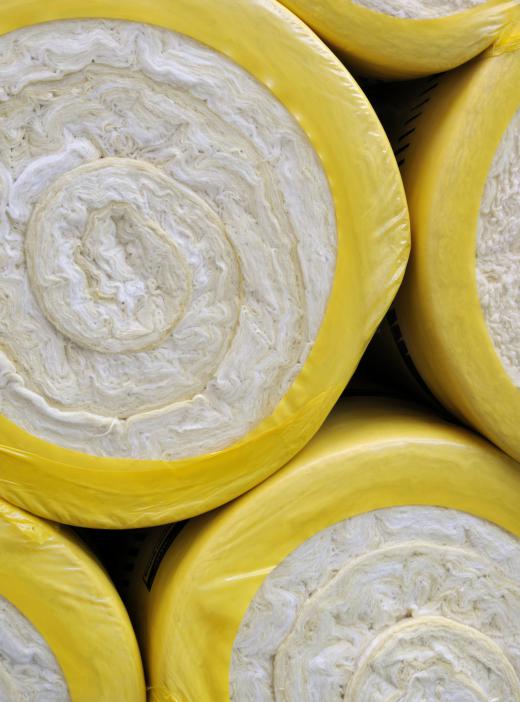Packing peanuts are small, vaguely S-shaped polystyrene pieces that are included in the packaging of delicate items to prevent damage. Some versions resemble actual peanuts more than others: other common shapes include tubes and 8s. They are used to fill in the airy gaps in shipping boxes so that objects do not move or slide around during transit and get damaged. In addition to being made from polystyrene, they are also sometimes made from biodegradable materials, in response to consumer concerns about polystyrene being send to the landfill, where it can take up a great deal of space and take centuries to biodegrade.
A variety of materials known as loose fill have been used to pack items for shipping for centuries. Hay and wood shavings were common until the mid-20th century, when advances in plastics made polystyrene a viable alternative to traditional packaging materials. When packing with organic materials, companies had to risk vermin infestation of their packages, and things like newspaper did not always protect the items that were being shipped, as well as having a tendency to compress during shipping.

Packing peanuts are lightweight but strong enough that they do not break down during the shipping process. Incredibly cheap to make, they quickly flooded the packaging market, and companies all over the world began to use them for shipping everything from books to fruit. They seemed like the ideal solution to the issue of shipping delicate items long distance, until concerns about landfill space started to arise. Like other plastics, polystyrene takes an extremely long time to degrade.

Several companies started to manufacture these cushioning materials with recycled plastic, which was a positive first step. Peanut exchanges started to arise as well: companies that received items packed in peanuts could bring them, bagged, to an exchange where companies that needed packing materials could pick them up and recycle them in their own packages. In addition, the cornstarch packing materials were developed. Cornstarch peanuts are totally biodegradable, as anyone who has run one under warm water knows. They are as efficient as plastic and can be used and reused before they are exhausted.

Companies continue to use polystyrene peanuts to protect their products during shipping, although most try to use them in an environmentally conscious way. Consumers who receive things packaged with peanuts can usually find a local drop-off point for them, or can reuse them when sending packages on to others. Most shipping companies are happy to accept recycled peanuts, and listings on the Internet can be used to assist consumers who are having difficulty getting rid of their packaging materials.
Ever since she began contributing to the site several years ago, Mary has embraced the exciting challenge of being a About Mechanics researcher and writer. Mary has a liberal arts degree from Goddard College and spends her free time reading, cooking, and exploring the great outdoors.

